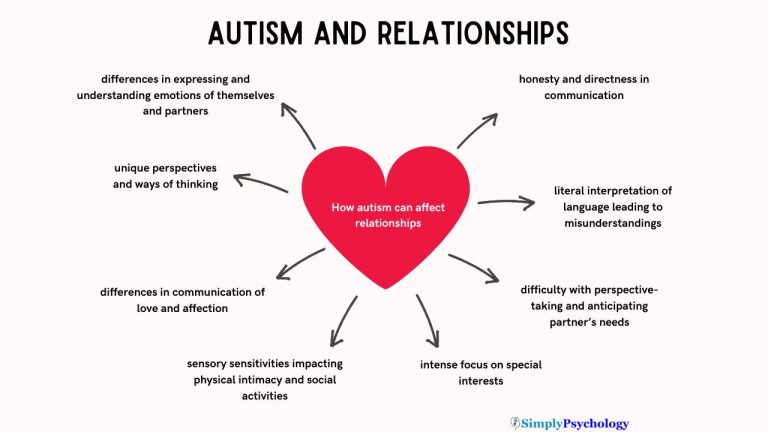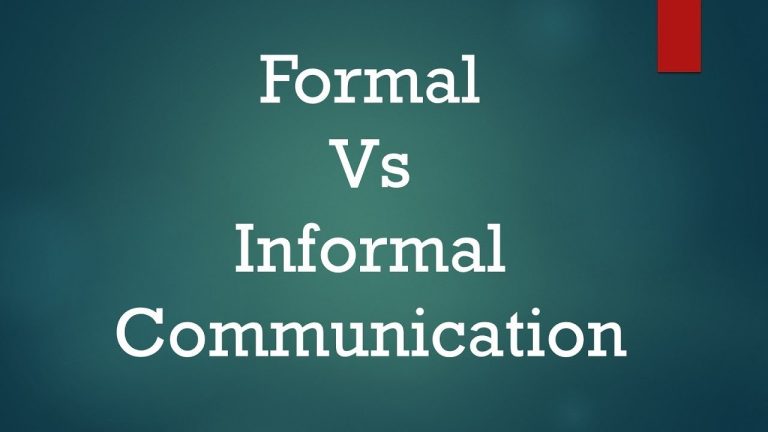What are the Basic Functions of Communication?
The basic functions of communication are to inform and persuade. Effective communication is essential for conveying information and convincing others of a particular viewpoint.
Communication allows individuals to exchange ideas, share knowledge, and express emotions. It plays a crucial role in building relationships, both personal and professional. Through communication, we can gather information, clarify doubts, and seek opinions. It is a vital tool for collaboration, problem-solving, and decision-making.
Moreover, communication helps in understanding different cultures and fosters cultural diversity. Overall, communication serves as a bridge that connects individuals and enables effective interaction, leading to understanding and mutual growth.

Credit: www.unesco.org
Function 1: Transmitting Information
One of the basic functions of communication is transmitting information. It involves the exchange of messages between individuals to share ideas, thoughts, and facts. Through effective communication, information can be accurately conveyed and understood by the recipients.
The Role Of Communication In Sharing Information
Communication serves as a fundamental tool for transmitting information. Whether it is conveying a message to a single individual or reaching a wider audience, effective communication plays a vital role in sharing information. Let’s dive into the key aspects of this function:
Examples Of Different Communication Channels
To transmit information, we rely on diverse communication channels that cater to various needs and preferences. Here are some examples of commonly used channels:
- Verbal communication: This includes face-to-face conversations, phone calls, or video conferences. It allows for immediate interaction and clarification.
- Written communication: Written messages can be transmitted through emails, memos, reports, or letters. They provide a tangible record of information for future reference.
- Digital communication: With the rise of technology, digital platforms are widely used for information sharing. These channels include social media, instant messaging apps, and online collaboration tools.
- Visual communication: Visual aids such as charts, graphs, presentations, or videos enable the conveyance of complex information in a simpler and more engaging manner.
- Nonverbal communication: Gestures, body language, facial expressions, and tone of voice can all contribute to the transmission of information.
Importance Of Clear And Concise Messaging
Clear and concise messaging is essential when transmitting information. It ensures that the intended message is understood accurately and efficiently. Consider the following key points:
- Clarity: The message should be expressed in a straightforward and unambiguous manner, leaving no room for confusion or misinterpretation.
- Conciseness: Keeping the message concise eliminates unnecessary and redundant information, allowing recipients to grasp the main points quickly.
- Effective organization: Structuring the message logically and coherently helps ensure that the information is presented in a manner conducive to understanding.
- Audience consideration: Tailoring the message to the specific audience is crucial for effective communication. Using language, tone, and style that resonate with the recipients enhances comprehension.
Remember, effective communication necessitates transmitting information clearly and concisely through various channels, taking into account the needs of the audience.
Function 2: Expressing Emotions
Expressing emotions is one of the basic functions of communication. It allows individuals to share their feelings, thoughts, and reactions, creating a deeper understanding and connection between people.
How Communication Allows Individuals To Express Their Feelings:
Communication is an essential tool that enables individuals to express their emotions and feelings. It provides a platform for people to convey their innermost thoughts, needs, and desires, allowing them to connect and bond with others on a deeper level.
Through effective communication, individuals can express their feelings in various ways, including verbal and nonverbal cues.
Verbal And Nonverbal Cues In Emotional Communication:
Effective emotional expression involves a combination of verbal and nonverbal cues, both of which play a vital role in conveying emotions accurately. Verbal cues include the words we choose, the tone of our voice, and the way we articulate ourselves.
These verbal expressions can range from expressing joy and happiness to sadness, anger, or fear.
Nonverbal cues, on the other hand, encompass body language, facial expressions, gestures, and even the overall posture of an individual. These nonverbal cues often communicate emotions more powerfully than words alone. For example, a warm smile can convey happiness, while crossed arms may indicate defensiveness or discomfort.
The Impact Of Effective Emotional Expression On Relationships:
Emotional expression through communication is a fundamental aspect of building and maintaining healthy relationships. When individuals express their emotions effectively, it helps establish trust and understanding between them. Here are some ways in which effective emotional expression impacts relationships:
- Enhanced empathy and understanding: By expressing their emotions clearly, individuals allow others to step into their shoes, fostering empathy and understanding.
- Conflict resolution: Openly expressing emotions can facilitate the resolution of conflicts. It allows individuals to address issues and concerns, leading to healthier resolutions.
- Strengthened bonds: Emotional expression helps create intimacy and emotional connection between individuals, strengthening their bonds and fostering a sense of closeness.
- Validation and support: When individuals express their feelings, it enables others to validate and provide support, creating a safe and nurturing environment.
Communication serves as a powerful tool for individuals to express their emotions effectively. Through a combination of verbal and nonverbal cues, individuals can convey their feelings, leading to enhanced understanding, stronger relationships, and a more fulfilling emotional connection with others.
Function 3: Building Relationships
One important function of communication is building relationships. It helps individuals connect, understand each other, and establish trust, leading to stronger personal and professional bonds.
Communication As A Tool For Connecting With Others
Communication serves as a powerful tool for connecting with others, enabling individuals to establish and nurture relationships. Whether in personal or professional settings, effective communication plays a crucial role in building meaningful connections. Through verbal and non-verbal cues, individuals can express their thoughts, emotions, and desires, thereby fostering understanding and intimacy.
By actively engaging in communication, individuals can create a bond and establish a sense of trust, forming the foundation for strong relationships.
The Role Of Listening And Empathy In Relationship Building
Listening and empathy are key components of relationship building through communication. By actively listening to others, individuals demonstrate their respect, attention, and willingness to understand. Through attentive listening, individuals can comprehend the perspectives, concerns, and needs of others, thereby fostering empathy.
Empathy, in turn, allows individuals to connect on a deeper level and establish a sense of understanding and solidarity. By empathizing with others, individuals can foster trust, support, and emotional connection, strengthening relationships.
The importance of effective communication in personal and professional settings:
- Effective communication is vital in personal relationships as it allows individuals to express their emotions, needs, and desires clearly. It helps to build trust and a better understanding between partners, friends, and family members.
- In professional settings, effective communication is essential for collaborating with colleagues, managing teams, and resolving conflicts. It enables individuals to convey their ideas, provide feedback, and build professional relationships.
- Effective communication fosters a positive work environment, enhances productivity, and promotes teamwork. It also aids in networking, business negotiations, and building professional connections.
- In personal and professional contexts alike, effective communication facilitates problem-solving, decision-making, and conflict resolution. It minimizes misunderstandings, reduces stress, and promotes harmonious relationships.
By recognizing the basic functions of communication, particularly the role it plays in building relationships, individuals can harness its power to form strong connections both personally and professionally. Through effective communication, individuals can cultivate trust, understanding, and empathy, paving the way for fulfilling and meaningful relationships.
So, embrace the art of communication and unlock the potential for enriching connections in your life.
Function 4: Influencing And Persuading
Communication serves various functions, one of which is influencing and persuading others. It involves the ability to convey ideas and opinions effectively, convincing and motivating others to take a desired course of action.
The Power Of Communication In Influencing Opinions And Behaviors
Communication Plays A Critical Role In Influencing And Persuading Individuals, Shaping Their Opinions And Behaviors. By Effectively Using Communication Techniques, Businesses And Individuals Can Bring About Desirable Outcomes And Achieve Their Objectives. Here Are Some Key Aspects Of The Function Of Communication In Influencing And Persuading:
- Demonstrating expertise: Effective communication allows individuals to showcase their knowledge, skills, and expertise, thus gaining credibility and influencing others to accept their viewpoints.
- Emphasizing benefits: Communication serves as a powerful tool to highlight the benefits and advantages of a particular product, service, or idea. By effectively conveying the value proposition, individuals can persuade others to take action.
- Building trust and rapport: Trust is essential in persuasion, and effective communication helps develop trust and rapport with the audience. By establishing a connection and empathetically addressing the audience’s concerns, persuaders can influence opinions and behaviors.
- Appealing to emotions: Emotional appeals can be highly influential in persuasion. By using storytelling, vivid language, and relatable examples, communicators can evoke emotions and influence the decision-making process.
Strategies For Effective Persuasion Through Communication
Implementing Specific Strategies Can Greatly Enhance The Effectiveness Of Persuasion Through Communication. Employing These Strategies Enables Individuals To Craft Their Messages In A Compelling Way And Increase The Likelihood Of Influencing Others:
- Understand the audience: Tailor the communication style and message to resonate with the target audience’s needs, values, and motivations. This understanding allows persuaders to connect on a deeper level and effectively influence their opinions.
- Provide evidence: Backing up claims and statements with concrete evidence, such as statistics, expert opinions, or case studies, lends credibility to the persuasion attempt. Providing reliable information helps persuade others by offering a strong foundation for the argument.
- Use persuasive language: Choosing words and phrases that evoke emotion and have a powerful impact can greatly enhance persuasive communication. Employing strong language and rhetoric techniques, such as repetition, imagery, and metaphors, can make the message more persuasive.
- Use social proof: Demonstrating that others have already adopted a particular opinion or behavior can be highly persuasive. Utilize testimonials, success stories, or endorsements to show that others have benefited from the proposed idea or solution.
- Anticipate and address objections: Effective persuasion involves pre-emptively addressing potential objections or counterarguments that might arise. By acknowledging and refuting these objections, persuaders can strengthen their position and alleviate doubts.
The Ethical Considerations In Persuasive Communication
While Persuasive Communication Can Be Powerful, It Is Important To Consider Ethical Implications. Respecting Ethical Boundaries Ensures That Persuasion Remains Respectful, Honest, And Transparent. Here Are Some Key Ethical Considerations To Keep In Mind When Engaging In Persuasive Communication:
- Honesty and transparency: Ensure that the information shared is accurate and truthful. Misleading or deceptive tactics are not only unethical but also damage trust, leading to negative consequences in the long run.
- Respecting autonomy: Persuasion should never involve coercion or manipulation. Respecting individuals’ autonomy and allowing them to make informed decisions preserves their agency and avoids unethical practices.
- Balancing interests: Consider the long-term impact of persuasion on all parties involved. Promote fairness, equality, and the well-being of both the persuader and the audience.
- Avoiding exploitation: Persuasion should not take advantage of vulnerable individuals or manipulate their emotions. Ethical persuasion focuses on empowering individuals to make informed choices rather than exploiting their weaknesses.
- Open dialogue: Encourage open and two-way communication, allowing the audience to ask questions, express concerns, and provide feedback. This helps to foster trust and ensures ethical persuasion.
The function of communication in influencing and persuading is crucial for individuals and businesses alike. By understanding the power of persuasive communication, implementing effective strategies, and adhering to ethical considerations, one can harness the potential of communication to shape opinions, behaviors, and outcomes.
Function 5: Resolving Conflict
Resolving conflict is a fundamental function of communication, allowing individuals to address and resolve differences effectively. Through open and honest dialogue, conflict can be resolved, promoting understanding and harmony in relationships.
Communication plays a crucial role in resolving disagreements and conflicts. When conflicts arise, it is important to employ effective communication strategies to address the issues and find mutually agreeable solutions. Understanding how communication can be used as a tool for conflict resolution is essential in maintaining healthy relationships.
Here are some key aspects to consider:
Communication As A Tool For Resolving Disagreements And Conflicts
- Active listening: Active listening is an integral part of effective conflict resolution. It involves giving full attention to the speaker, demonstrating understanding, and providing feedback. By actively listening, individuals can gain insights into the root causes of conflicts and work towards resolving them.
- Expressing emotions: Openly expressing one’s emotions is another important aspect of resolving conflicts through communication. By sharing their feelings and concerns, individuals can foster empathy and understanding, which can lead to finding common ground and resolving the conflict.
- Seeking common ground: Effective communication in conflict situations involves finding common ground. Encouraging open dialogue, brainstorming solutions, and focusing on shared interests can help parties involved in a conflict work towards a resolution that benefits everyone.
- Remaining calm and respectful: In conflict situations, emotions can run high, making it crucial to communicate in a calm and respectful manner. By keeping emotions in check and using respectful language, individuals can create a conducive environment for resolving conflicts.
The Importance Of Active Listening In Conflict Resolution
- Active listening helps parties involved in a conflict gain a deeper understanding of each other’s perspectives and concerns.
- It shows respect and validates the feelings and experiences of others, fostering trust and openness.
- Active listening reduces misunderstandings by giving individuals an opportunity to clarify and gain clarity.
- It promotes empathy and encourages mutually beneficial solutions, as it enables individuals to consider various viewpoints.
Strategies For Effective Communication In Conflict Situations
- Choosing the right time and place: Selecting an appropriate time and private space for discussions can contribute to effective communication in conflict situations. Creating an environment free from distractions can help maintain focus and facilitate constructive dialogue.
- Using “i” statements: Using “i” statements rather than accusatory language helps individuals express their perspectives without provoking defensiveness. This approach encourages dialogue rather than escalating conflicts.
- Remaining solution-oriented: Keeping the focus on finding solutions rather than dwelling on past grievances is vital for effective communication in conflict situations. By exploring different options and being open to compromise, conflicts can be resolved more effectively.
- Taking breaks when needed: Emotions can sometimes hinder productive communication. If conflicts become heated or overwhelming, it is beneficial to take breaks to cool off and reflect. This allows individuals to approach discussions with a calmer mindset.
- Seeking mediation: In complex or longstanding conflicts, seeking mediation from a neutral third party can be helpful. A mediator can facilitate communication, ensure fairness, and guide the parties involved towards finding a resolution.
By recognizing the importance of communication in conflict resolution and employing effective strategies, individuals can foster healthy relationships and resolve conflicts in a constructive manner.
Frequently Asked Questions Of What Are The Basic Functions Of Communication?
What Are The 4 Basic Functions Of Communication?
The four basic functions of communication are to inform, persuade, entertain, and build relationships. Communication informs by sharing facts, details, and knowledge. It persuades by influencing people’s thoughts, actions, or opinions. Entertainment is a function of communication that provides enjoyment, amusement, or pleasure.
Finally, communication helps build relationships by fostering connections, understanding, and trust between individuals or groups. These functions are essential in almost every interaction and can be seen in various forms of communication, such as conversations, advertisements, media, or presentations. They ensure effective communication and enhance the overall quality of interactions between people.
What Is The 5 Basic Functions Of Communication?
The five basic functions of communication are information sharing, persuasion, influence, conflict resolution, and collaboration. Information sharing involves transmitting ideas, facts, and data between individuals or groups. Persuasion refers to convincing others to adopt a particular viewpoint or take a specific course of action.
Influence is the ability to shape others’ thoughts, feelings, and behaviors. Conflict resolution involves resolving disagreements or disputes in a peaceful and constructive manner. Collaboration is working together with others to achieve a common goal or objective. Effective communication facilitates these functions by promoting understanding, clarity, and transparency among individuals or groups.
It helps in building relationships, fostering trust, and enhancing cooperation. By using various communication channels, such as verbal and non-verbal cues, written messages, and active listening, people can effectively engage in these functions to achieve their desired outcomes.
What Are The Most Basic Functions Of Communication?
The most basic functions of communication include transmitting and receiving messages, conveying information, establishing relationships, and influencing others. Communication enables the exchange of ideas, thoughts, and feelings between individuals or groups. It helps to create mutual understanding, build connections, and foster cooperation.
Effective communication allows people to share information, seek clarification, and resolve conflicts. It also helps in influencing others by persuading, informing, or motivating them. Communication plays a vital role in various aspects of life, such as personal relationships, work environments, and social interactions.
It is essential for expressing emotions, sharing knowledge, coordinating activities, and making informed decisions. In summary, the fundamental functions of communication encompass transmitting and receiving messages, conveying information, establishing relationships, and influencing others.
Are There Three Basic Functions Of Communication?
Yes, there are three basic functions of communication. These functions include conveying information, expressing thoughts and feelings, and influencing others. Communication is a fundamental aspect of human interaction and these functions play a vital role in various contexts such as personal relationships, business dealings, and social interactions.
By conveying information, we share facts, ideas, and opinions with others. Expressing thoughts and feelings enables us to communicate our emotions, needs, and desires effectively. Lastly, the function of influencing others allows us to persuade, motivate, and negotiate with individuals or groups.
Understanding these three functions can improve our communication skills and help us establish better connections with others.
Conclusion
Effective communication is essential for our daily lives, allowing us to connect, share information, and understand each other. By analyzing the basic functions of communication, we can better appreciate its significance in achieving our personal and professional goals. Firstly, communication serves the purpose of sharing ideas and knowledge.
It allows us to convey our thoughts, beliefs, and experiences to others, fostering understanding and empathy. Secondly, communication enables us to express our emotions, needs, and desires, helping us connect on a deeper level and build meaningful relationships. It also facilitates problem-solving by encouraging collaboration and cooperation.
Moreover, communication plays a crucial role in exchanging information and keeping us informed about the world around us. Whether it’s through verbal, nonverbal, or written mediums, communication bridges the gap between individuals, communities, and even nations. It enables us to learn, grow, and adapt to new situations, enhancing our personal and professional development.
The functions of communication are multifaceted and vital in our daily lives. By recognizing and honing these skills, we can become effective and successful communicators, ultimately leading to more fulfilling relationships and opportunities for growth. So, let’s value and prioritize the power of communication in the diverse world we live in.





